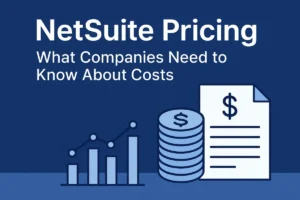Disclaimer: This article is for informational purposes only and does not constitute tax, legal, or financial advice. Please consult a qualified professional for guidance specific to your business.
When you’re building a business, it’s natural to focus on sales, customer satisfaction, and day-to-day operations. But as soon as the first profits roll in, one reality becomes unavoidable: taxes play a central role in how you manage and grow your company. The way your business is structured, the deductions you claim, and even how you pay yourself all determine how much of your hard-earned money you get to keep.
Many entrepreneurs don’t realize that one of the most impactful decisions they make early on is choosing a business entity. It’s not just about legal liability; it’s also about how the IRS will treat your income. For example, the choice between setting up an LLC or an S Corporation can affect not only your taxes but also your long-term growth strategy. Understanding these differences helps you avoid costly mistakes and build a stronger foundation for your business. With professional guidance, you can navigate this choice more confidently and align your tax structure with your bigger goals.
Choosing the Right Business Structure: The Tax Perspective

Your business structure sets the stage for how you’ll be taxed, which in turn influences cash flow, reinvestment options, and even your personal income. Two of the most common options for small business owners are LLCs and S Corporations. While both offer liability protection, they come with unique tax implications that affect your bottom line.
When comparing pass through LLC vs S Corp you’ll notice that each structure handles profits differently. An LLC allows income to pass through directly to your personal tax return, making it a flexible and straightforward option. However, all profits are generally subject to self-employment taxes. An S Corporation, on the other hand, also passes earnings to your personal return but gives you the option to pay yourself a reasonable salary while receiving additional earnings as distributions. Since distributions aren’t subject to self-employment tax, this approach can potentially lower your overall tax bill.
The choice between these two isn’t just about tax savings. It also affects how you present your business to investors, how you manage payroll, and how much paperwork you’re willing to handle. This is why understanding the differences upfront and obtaining advice tailored to your specific situation can be a valuable part of your business strategy.
Tax Planning and Cash Flow Management

Once your structure is in place, tax planning becomes an ongoing part of managing your business. Taxes directly impact your cash flow, and failing to plan can put you in a tough spot when payment deadlines roll around. Many small business owners underestimate quarterly estimated payments, only to find themselves scrambling when it’s time to write a big check to the IRS.
Strategic tax planning helps you anticipate these expenses and avoid surprises. For example, setting aside a portion of every payment you receive ensures that you won’t come up short when tax season arrives. It’s also essential to track deductions such as marketing expenses, new equipment purchases, or travel costs. These deductions lower your taxable income and free up more cash to reinvest in growth.
In short, proactive tax planning doesn’t just help you stay compliant; it keeps your cash flow stable and makes it easier to scale without unnecessary stress.
Growth and Expansion: Tax Implications
As your business grows, your tax situation becomes more complex. Hiring employees instead of relying solely on contractors, for instance, brings payroll taxes, benefits, and compliance requirements into play. Expanding into new states can also create what’s known as “nexus,” which may trigger sales tax obligations in those regions. And if you start serving international clients, you’ll need to pay attention to cross-border tax rules and treaties.
These factors shape how you structure expansion. Should you hire full-time staff or continue to use freelancers? Should you register in another state or manage operations remotely? The answers depend in part on the tax consequences of each move.
Growth isn’t just about revenue; it’s about ensuring that every new stage of development doesn’t erode your profits due to unplanned tax obligations. Aligning your expansion strategy with your tax strategy allows you to scale more efficiently.
Leveraging Deductions and Credits

Tax deductions and credits are more than just ways to reduce your tax bill; they can actually guide business strategy. For instance, if your company invests in research and development, you may qualify for R&D tax credits, which can significantly lower your tax liability. Similarly, businesses that adopt energy-efficient technologies may be eligible for specific incentives that reward sustainable practices.
These benefits not only reduce expenses but also encourage innovation and forward-thinking decisions. By utilizing available deductions and credits strategically, you can reinvest in areas that drive long-term growth, such as product development or customer acquisition.
Failing to take advantage of these opportunities means leaving money on the table. That’s why staying informed and planning makes such a difference.
Tax Compliance and Risk Management
No matter how carefully you plan, compliance remains a critical part of running your business. The IRS takes record-keeping and reporting seriously, and mistakes can lead to penalties or even an audit. While this might sound intimidating, building compliance into your everyday processes can protect your business from unnecessary risks.
Simple habits, such as keeping organized receipts, utilizing reliable accounting software, and working with a tax professional, help you stay on top of your responsibilities. Beyond avoiding fines, compliance also adds credibility. Investors, lenders, and partners feel more confident in businesses that demonstrate transparency and accuracy in their financial reporting.
Managing compliance well is not just about following rules; it’s a way of safeguarding your reputation and ensuring that tax issues don’t derail your progress.
Taxes shape nearly every decision you make as a business owner. From the structure you choose to how you reinvest profits, the impact of taxes is impossible to ignore. By taking a proactive approach, selecting the correct entity, planning for cash flow, leveraging deductions, staying compliant, and anticipating changes, you’re not just meeting obligations; you’re strengthening your business.
Instead of viewing taxes as an annual chore, think of them as an ongoing part of your overall financial strategy. When you do, you’ll gain more control, keep more of what you earn, and position your company for sustainable growth.












